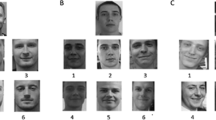Abstract
Clinical experience shows that the individual significance of olfactory function varies between subjects. In order to estimate these individual differences we developed a questionnaire to study the subjective importance of the sense of smell. Questions were arranged within three subscales: association with olfactory sensations, application of the sense of smell, and the readiness to draw consequences from the olfactory perception. The questionnaire was shown to be time efficient, suitable for normosmic subjects and patients with hyposmia or anosmia. It exhibited a good internal reliability (Cronbach’s Alpha = 0.77). First results in 123 subjects indicate that the subjective importance of the sense of smell stays at the same level throughout life-span despite of a decreased olfactory sensitivity. Furthermore, women reported a higher importance of olfaction. It is hoped that this questionnaire will contribute to clarify, for example, cross-cultural differences in the perception of odours.


Similar content being viewed by others
References
Vennemann MM, Hummel T, Berger K (2008) The association between smoking and smell and taste impairment in the general population. J Neurol 255(8):1121–1126
Bramerson A et al (2004) Prevalence of olfactory dysfunction: the Skovde population-based study. Laryngoscope 114(4):733–737
Hummel T et al (2007) Normative data for the “Sniffin′n Sticks” including tests of odor identification, odor discrimination, and olfactory thresholds: an upgrade based on a group of more than 3,000 subjects. Eur Arch Otorhinolaryngol 264:237–243
Landis BN, Konnerth CG, Hummel T (2004) A study on the frequency of olfactory dysfunction. Laryngoscope 114(10):1764–1769
Murphy C et al (2002) Prevalence of olfactory impairment in older adults. JAMA 288(18):2307–2312
Welge-Luessen A et al (2005) What is the correlation between ratings and measures of olfactory function in patients with olfactory loss? Am J Rhinol 19(6):567–571
Landis BN et al (2003) Ratings of overall olfactory function. Chem Senses 28(8):691–694
Hummel T, Nordin S (2005) Olfactory disorders and their consequences for quality of life. Acta Otolaryngol 125(2):116–121
Landis BN, Hummel T (2006) New evidence for high occurrence of olfactory dysfunctions within the population. Am J Med 119(1):91–92
Temmel AF, Quint C, Schickinger-Fischer B, Klimek L, Stoller E, Hummel T (2002) Characteristics of olfactory disorders in relation to major causes of olfactory loss. Arch Otolaryngol Head Neck Surg 128:635–641
Bonfils P, Faulcon P, Tavernier L, Bonfils NA, Malinvaud D (2008) Home accidents associated with anosmia. Presse Med 37:742–745
Santos DV, Reiter ER, DiNardo LJ, Costanzo RM (2004) Hazardous events associated with impaired olfactory function. Arch Otolaryngol Head Neck Surg 130:317–329
Frasnelli J, Hummel T (2005) Olfactory dysfunction and daily life. Eur Arch Otorhinolaryngol 262(3):231–235
Deems DA et al (1991) Smell and taste disorders, a study of 750 patients from the University of Pennsylvania Smell and Taste Center. Arch Otolaryngol Head Neck Surg 117(5):519–528
Miwa T, Furukawa M, Tsukatani T, Costanzo RM, DiNardo LJ, Reiter ER (2001) Impact of olfactory impairment on quality of life and disability. Arch Otolaryngol Head Neck Surg 127:497–503
Landis BN, Hummel T, Lacroix J-S (2005) Basic and clinical aspects of olfaction. Adv Tech Stand Neurosurg 30:70–105
Lledo PM, Gheusi G, Vincent JD (2005) Information processing in the mammalian olfactory system. Physiol Rev 85(1):281–317
Willander J, Larsson M (2007) Olfaction and emotion: the case of autobiographical memory. Mem Cognit 35(7):1659–1663
Hummel T, Kobal G, Gudziol H, Mackay-Sim A (2007) Normative data for the “Sniffin’ Sticks” including tests of odor identification, odor discrimination, and olfactory thresholds: an upgrade based on a group of more than 3,000 subjects. Eur Arch Otorhinolaryngol 264:237–243
Hummel T, Heilmann S, Murphy C (2002) Age-related changes of chemosensory functions, in Olfaction, taste and cognition. In: Rouby C et al. (eds). Cambridge University Press, New York, pp 441–456
Schwob JE (2002) Neural regeneration and the peripheral olfactory system. Anat Rec 269(1):33–49
Oberg C, Larsson M, Backman L (2002) Differential sex effects in olfactory functioning: the role of verbal processing. J Int Neuropsychol Soc 8(5):691–698
Hughes LF et al (2002) Effects of hormone replacement therapy on olfactory sensitivity: cross-sectional and longitudinal studies. Climacteric 5(2):140–150
Rosenthal R, Rosnow RL (1975) The volunteer subject. Wiley, New York
Conflict of interest statement
This research had no external sponsor.
Author information
Authors and Affiliations
Corresponding author
Rights and permissions
About this article
Cite this article
Croy, I., Buschhüter, D., Seo, HS. et al. Individual significance of olfaction: development of a questionnaire. Eur Arch Otorhinolaryngol 267, 67–71 (2010). https://doi.org/10.1007/s00405-009-1054-0
Received:
Accepted:
Published:
Issue Date:
DOI: https://doi.org/10.1007/s00405-009-1054-0



